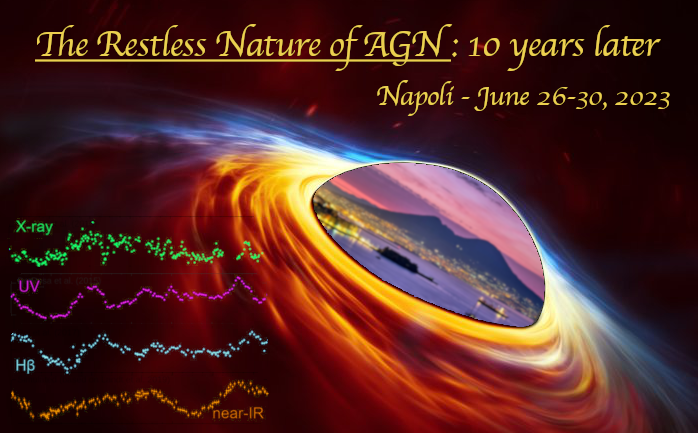Speaker
Description
The variability of active galactic nuclei (AGN) across all wavelength bands is considered to be one of their most defining characteristics. Generally, their variability is assumed to be of stochastic nature and has been used with great success in the last 30 years to identify and map the innermost AGN structures -- namely the broad-line region (BLR) and accretion disk (AD) -- using methods such as reverberation mapping. In addition to the overall stochastic variability behavior of AGN, transient events such as changing-look (CL) transitions have gained more and more attention in recent years. In the optical domain, CL AGN are characterized by their change of spectral classification, switching between Sy 1 and Sy 2 and associated sub-types. These transitions happen on the order of months to years and are often accompanied by significant flux changes on the order of several magnitudes. Regarding the apparent changes in BLR kinematics and the huge flux change on relatively small time scales, CL events in AGN pose considerable challenges in understanding accretion onto supermassive black holes (SMBHs). For example, the typical transition time-scales cannot be explained by viscous radial inflow. Currently, several explanations for the CL phenomenon are discussed, including tidal disruption events (TDEs), microlensing caused by an intervening object, sudden changes of obscuration, or accretion disk instabilities
To date, a few dozen CL AGN have been identified, but only a few of them -- most notably 1ES 1927+654 -- have been studied spectroscopically in greater detail in temporal proximity to the transient event. This lack of high-quality data significantly complicates the understanding of the CL phenomenon. Here, we present results of a multi-wavelength campaign of NGC 1566 obtained with XMM-Newton, NuSTAR, Swift, and SALT. NGC 1566 is a local face-on Seyfert galaxy and is known for exhibiting recurrent outbursts. The flux and spectral variations in 2018 were the strongest changes observed since 1966, when NGC 1566 exhibited similarly strong broad-line emission. We obtained spectroscopic and photometric observations directly before, after, and during the transient event in 2018, in detail revealing changes in the BLR and the non-stellar continuum. We will discuss the emergence and evolution of line species not present in the low state, the evolution of the BLR, in particular variations in the line profiles and BLR kinematics, the nature of the non-stellar continuum, and the spectral energy distribution (SED) during the event. The results will be reviewed in context of currently discussed explanations for the CL phenomenon.

